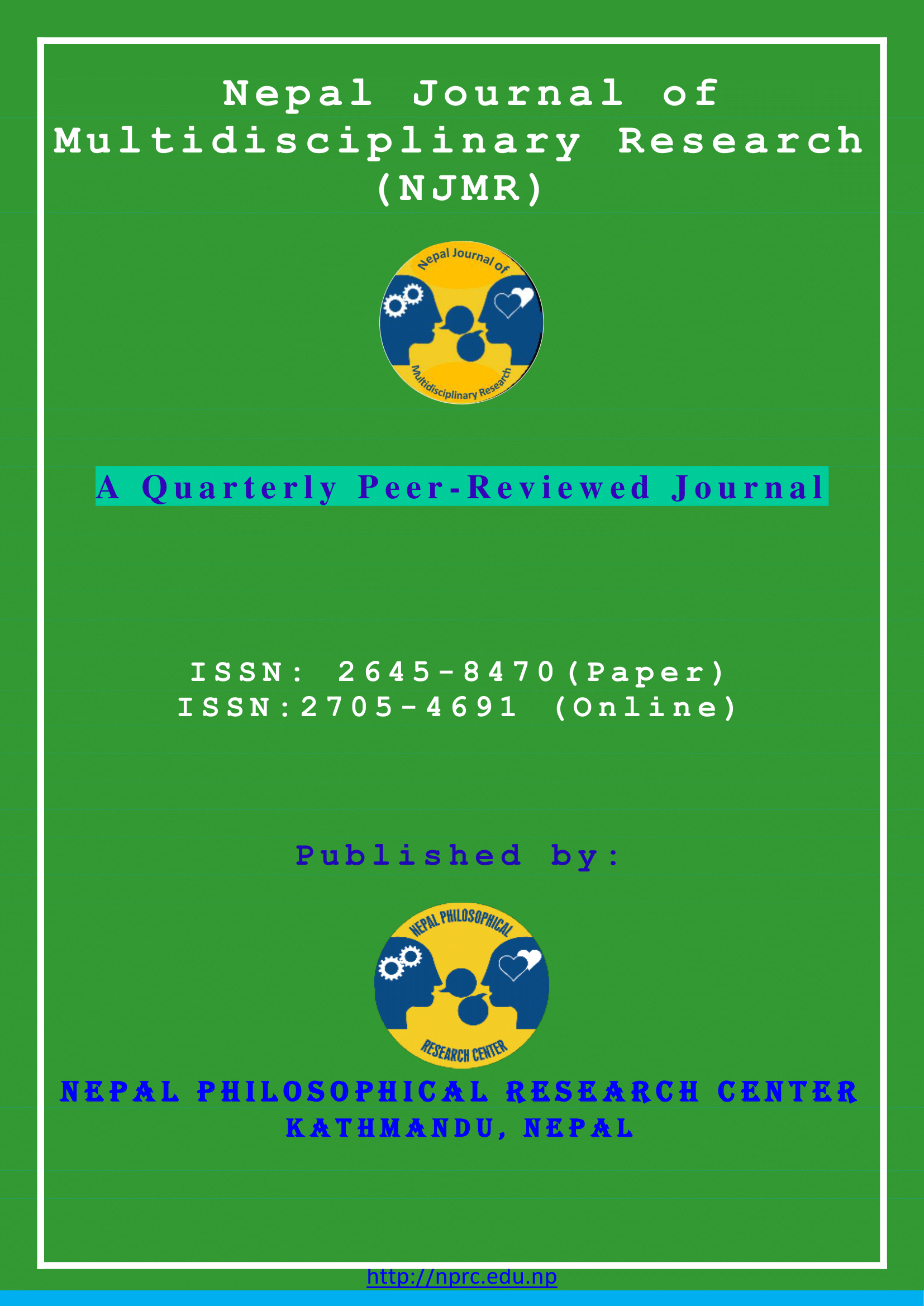Fund Transfer Pricing: An Empirical Evidence from Nepalese Commercial Banks
DOI:
https://doi.org/10.3126/njmr.v5i3.48827Keywords:
Commercial Banks, Funds Transfer Pricing (FTP), Operational Variables, Performance MeasuresAbstract
Funds Transfer Pricing (FTP) is considered the most potent and valuable component of any profitability measurement system for financial institutions. It is a process that assigns funding costs to asset originators (loans) and funding credits to liability providers (deposits). The study's objective was to measure the awareness and collect opinions regarding FTP practice in Nepal based on a survey of the opinions of branch managers of Nepalese Commercial Banks. The study followed a descriptive research design. All branch managers of Nepalese commercial banks were considered population, of which 40 branch managers were sampled using the purposive sampling technique. The branch managers were interviewed through personal meetings and telephone using structured open-ended questions to have information regarding the attitude of practitioners on the FTP system. Data has been analyzed based on one-to-one interviews. The study reveals that only 25 branch managers were found to have enough awareness of the FTP system. Thus, further study was focused on 25 branch managers. Negative responses were found regarding the possibility of an independent negotiated FTP system among branches. In conclusion, the practice of advanced FTP systems results in higher productivity among branches, so Nepalese managers should reasonably know about the FTP system.
Downloads
Downloads
Published
How to Cite
Issue
Section
License
Copyright (c) 2022 Raju Bhai Manandhar

This work is licensed under a Creative Commons Attribution-NonCommercial 4.0 International License.
This license enables reusers to distribute, remix, adapt, and build upon the material in any medium or format for noncommercial purposes only, and only so long as attribution is given to the creator.




